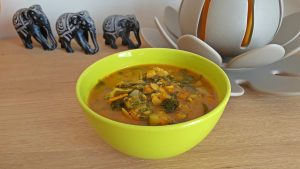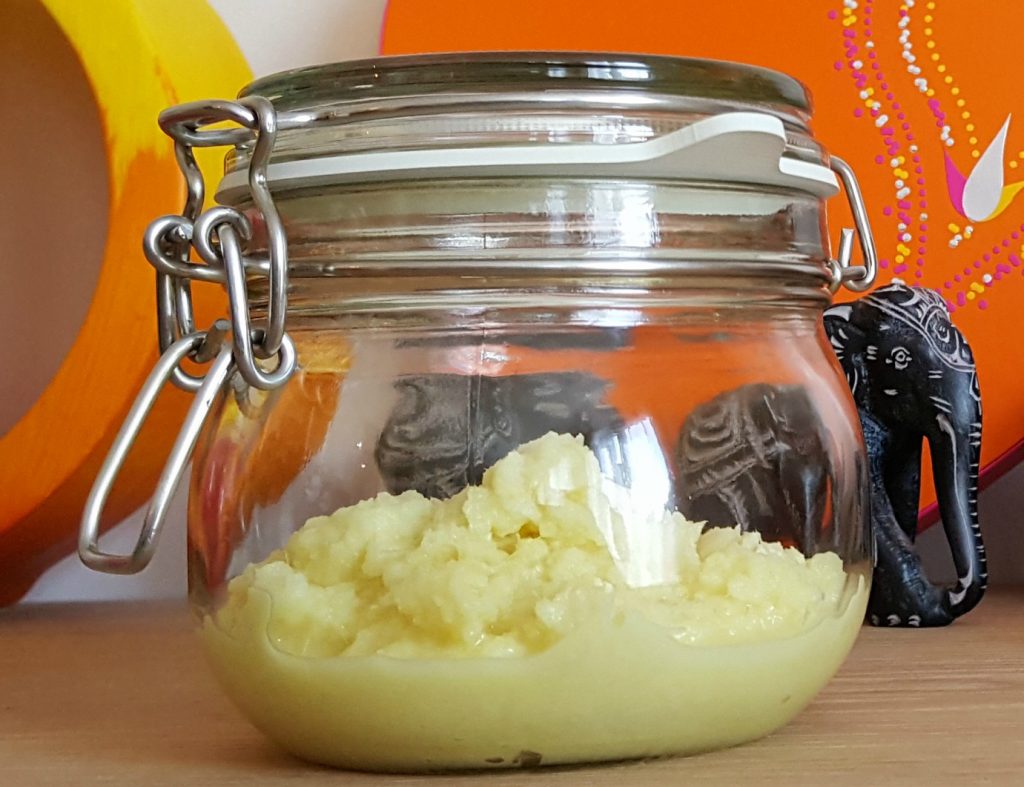
Be it with idlis, dosas, vadais or rice, sambar is undoubtedly an indispensible part of South Indian cuisine.
Don’t wait for a wedding invitation to eat this sumptuous South Indian spinach sambar!
Easy & Quick Sambar Recipe, How to make Spinach Sambar.
Ingredients for Spinach Sambar
- Tuvar dal/pigeon pea lentils – 50g pressure cooked until the dal becomes soft
- Tamarind juice, extracted from a small lemon-sized ball of tamarind soaked in hot water
- Carrot – 1, grated
- Tomato – 1, chopped
- Spinach leaves
- Zucchini – ½, chopped (also you can use the veggies of your choice)
- Turmeric powder – ¼ tsp
- Sambar powder – 1 tsp
- Salt to taste
- Oil -2 tbsp
- Onion – ½, sliced finely
- Water – 1 cup
- Water for pressure cooking the dal – ratio 3 : 1
For the tempering
- Oil – 1 tsp
- Mustard seeds – ½ tsp
- Fenugreek seeds (optional) – ¼ tsp
- Asafoetida – a pinch
- Curry leaves – few
For the garnishing
- Coriander leaves
Instructions
- First soak the tamarind in warm water. After 30 minutes, squeeze off the tamarind well, then filter the tamarind juice.
- Whash and chop the veggies.
- Rinse the tuvar dal thoroughly and drain out the water.
- Pressure cook the dal with water, turmeric powder and salt on medium flame for 2 to 3 whistles. The dal should become soft and mushy. Once the pressure settles down on its own, remove the lid, mash the dal to smooth using a wooden spoon and keep aside.
- Heat the oil in the pressure cooker, then allow to cook on a medium flame the onion for 30 seconds, and the tomato until it turns into a mushy texture while stirring occasionally.
- Add all the veggies, stir about 1 minute then add the sambar powder, water mix well and let it boil.
- Now add the tamarind juice and salt. Pressure cook again for 1 whistle, turn off the heat and maintain the lid closed for about 5 minutes.
- Add the smooth boiled tuvar dal. If the consistency of sambar is thick, then add some water.
- Check if there is enough salt, if needed add more.
- Bring the sambar to boil. Meanwhile heat the oil in a small pan. Put the mustard seeds, once the seeds crackle turn the heat on low flame, then add fenugreek seeds, asafoetida powder and curry leaves.
- Pour the whole tempering in the boiling hot sambar. Mix well and close the lid so the flavors can infuse.
- Garnish with coriander leaves.
Serve the Spinach Sambar hot with steamed rice, idli, dosa or medu vadai.
Tips
For faster cooking you can soak the lentils in water for 15 mins before cooking them.
Dont overcook the dal, as the taste of it diminishes.
Usually the vegetables are not cooked in a pressure cooker but in another pan. Cooking the vegetables in the pressure cooker reduces the cooking time considerably and also preserves the nutrients of the vegetables.
Health benefits
It is low in glycemic index. A bowl of sambar has a GI of 53.6%, thereby helping you to keep your blood sugar level in check without compromising on the taste.
Sambar is loaded with proteins and fibre. A typical 200 gm serving of sambar provides about 8-10 gm of proteins from dal (+more depending on the vegetables used). Moreover, it also provides 2-3 gm of dietary fiber, which helps in the overall growth and development of muscles when taken with idlis, dosas or rice.
Sambar is used as natural laxative. It is due to the high water content and the presence of fibre.
Sambar is a healthy weight loss recipe. This is because, with loads of vegetables and spices.
Sambar is a not only a storehouse of nutrients but also packed with proteins and fibre. And what could be better than having idlis or dosas with sambar in the breakfast !
